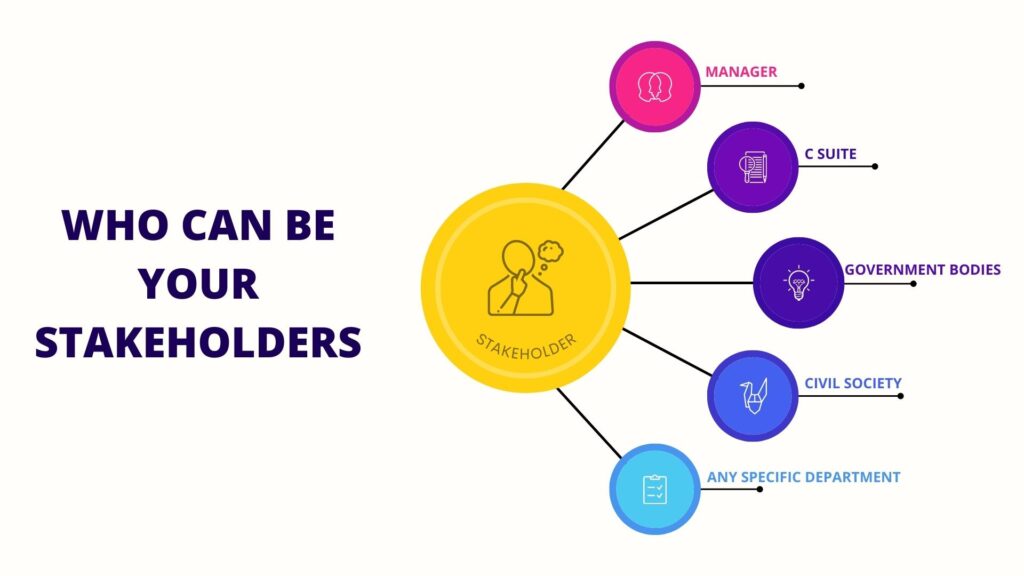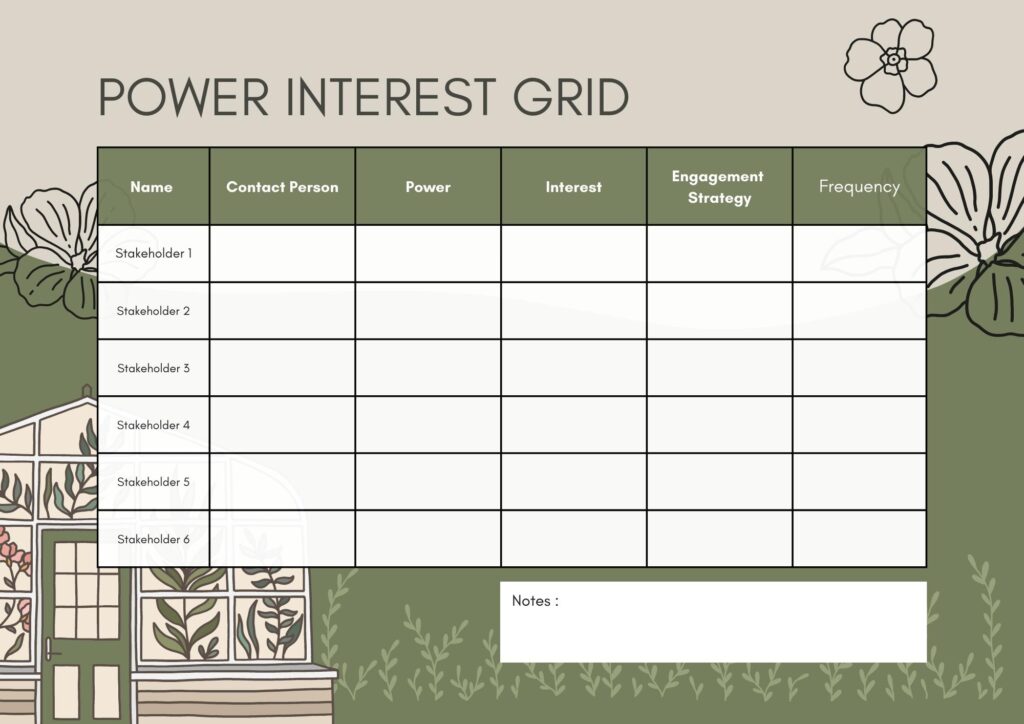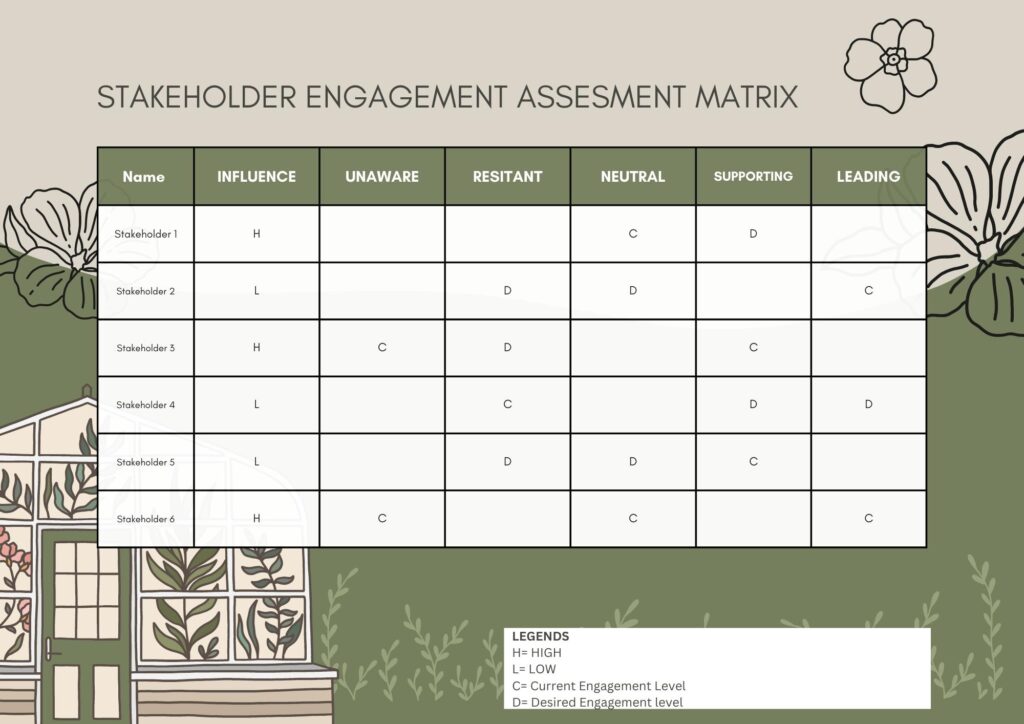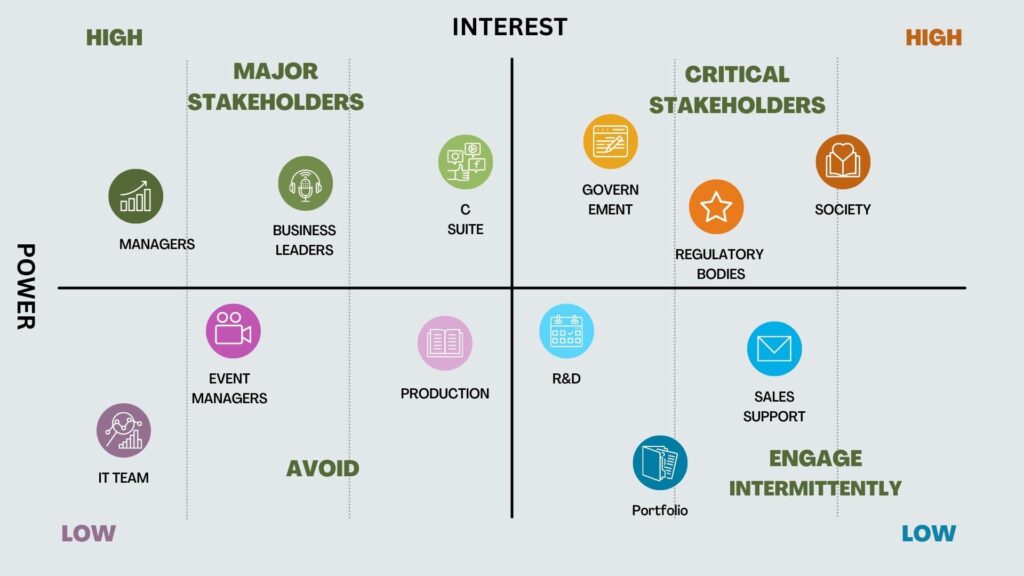What is Stakeholder Analysis?

Stakeholder analysis can be defined as a pursuit of managing a stakeholders in a business. A Stakeholder is a specific person or a resource that can positively or adversely affect your business decisions. Stakeholders can often range from a reporting manager to a shareholder within a company or people in a society at large. stakeholder analysis exercise is critical in defining the success of any project as it allows management, information and knowledge leveling of key resources that may impact your Project.
Stakeholder analysis process is a key exercise due to the following reasons. These are are the benefits of stakeholder analysis
- It allows proper information and knowledge leveling so that gaps in understanding and delivery is minimized
- Stakeholder analysis helps in taking all all the stakeholders and garner their support whenever required
- Stakeholder analysis makes critical decision making easy as it works on collective intelligence of the group
- If stakeholder analysis is not done properly, it may cause major issues at the later stages of the project
- Improper stakeholder analysis at the later stage of the project can create late changes which can impact project cost and schedule
What is A Stakeholder Analysis?
Stakeholders in general are comprised of the following. Though the list is not comprehensive it may cover these following elements.
- Managers
- Employees
- Shareholders
- Society in general
- Owner of the business
- Environment
- Competition/Competitors
- Local Administration or government at large
Stakeholder analysis Tools
These are the 4 most widely used tools for Stakeholder analysis. We will go in detail for each of them
- Power Interest Grid
- Stakeholder engagement assessment matrix
- Influence Matrix
- Stakeholder Map
Stakeholder Analysis Tool 1: Power/interest grid
A power/interest grid is a tool that helps project managers understand how to best communicate with stakeholders and identify their level of influence. This grid lists stakeholders’ interests and identifies how they will benefit from a project. This tool can help strengthen communication strategies with stakeholders and make projects more effective. A stakeholder is anyone with a vested interest in the outcome of a project. It includes people, organizations, and the environment. Project Stakeholder analysis can yield significant results for your projects in general
Using the power/interest grid will allow you to clearly see stakeholder relationships and develop strategies to engage them. The grid will also help you develop an action-oriented plan that will have maximum support from your stakeholders. It is important to note that stakeholders’ roles may change over time. That is why the grid should be reviewed regularly.
Once you have developed a stakeholder power/interest grid, you can develop stakeholder communication plans. You can use the grid to determine how often you need to communicate with high-power and high-interest stakeholders. High-power stakeholder groups will want to be involved in a project on a regular basis, while those with low power will need less frequent communication.

As a leader or manager, you are responsible for identifying your stakeholders’ interests and prioritizing them. This is a tricky decision – everyone wants to be happy. Fortunately, the Power/Interest Grid is an effective tool to help you decide who deserves priority and how to deal with them.
Knowing your stakeholders’ interests and needs will make it easier to communicate with them. You can also find out about their motivations and interests by asking them questions. If they are less forthcoming, you might need to conduct additional research. Once you’ve identified your stakeholders, plot their interests and needs on the grid with a diagramming tool. If you find any inconsistencies, draw arrows to show how they are connected and influence each other.
Stakeholder Analysis Tool 2: Stakeholder engagement assessment matrix

A stakeholder engagement assessment matrix (SEA) helps you identify the current and desired levels of engagement among your stakeholders. The SEA matrix is typically a graph with rows and columns defining stakeholder status and desired engagement. Once you’ve identified the key stakeholders, you can develop targeted communications to them.
Stakeholders may be individuals, groups, or organizations. Identifying and understanding each stakeholder’s level of power and influence will help you create an engagement strategy. It also helps you understand how to communicate effectively with each stakeholder. It’s important to know the preferences, availability, and time constraints of each stakeholder so you can tailor your communications accordingly. In addition, the matrix should be verified with stakeholders so you know whether it’s accurate. If possible, you can also include information from interviews conducted with stakeholders.
Power influence is an important indicator of a stakeholder’s influence over the project. The highest level of influence means that the stakeholder has the ability to facilitate or control key project decisions. They can also influence others to take action. Most often, power influence comes from an individual’s position and authority, but some other factors can make an individual an influential person. Other indicators of power influence include expert knowledge, negotiation and consensus-building skills, and charisma.
In addition to power influence, the level of participation in a project is an important indicator of its success. In order to create a successful product, you must engage the right stakeholders. The power-interest grid can help you analyze this vital information. By asking the right questions, you can build your product’s power-interest matrix and engage the right stakeholders for a successful launch.
Stakeholder engagement assessment matrix is a useful tool for project managers. It helps assess the power of different stakeholders and identify gaps in their engagement. It’s a simple way to document the desired and actual levels of stakeholder involvement. The matrix also enables you to monitor where you may need to make improvements.
Stakeholder engagement assessment can be simple or complex, depending on the project. The time required should be proportionate to the complexity of the project. For small projects, a stakeholder engagement assessment can be completed in a few hours. During this time, you’ll clarify the project objectives, key assumptions, risks, and power influence. To effectively engage stakeholders, you must ensure they have a vested interest and power in the outcome of the project.
Stakeholder Analysis Tool 3: Influence matrix
The Influence Matrix of Power shows how a person’s level of influence relates to other people. The higher a person is on the Matrix, the more influential he or she is. The opposite is true if a person is lower on the Matrix and lower on the organizational chart.
It is essential for an action team to understand the different stakeholder groups involved in a project. This helps them decide which stakeholders to work with closely and which to manage least. By using the Power Influence Matrix, the action team can identify the key stakeholders and their level of involvement. It will also help them develop a communication strategy.
The Influence Matrix incorporates many different perspectives, including attachment theory, psychodynamic theory, trait theory, interpersonal psychology, and evolutionary psychology. It provides an overall understanding of social influence and the motivations behind it. Using the Influence Matrix, we can better understand how the human mind works.
Beth and Conrad’s relationship with each other is based on an implied social contract. By violating that implied social contract, Conrad deprived Beth of social capital. As a result, she wants Conrad to apologize and submit. Beth’s mother, on the other hand, experiences Conrad as cold and withholding.
While the Influence Matrix can help you understand how to effectively engage with each of the stakeholders, it can also make it easier to determine which stakeholders should be positioned on a project steering group. A project steering group that contains high-power and high-support stakeholders is likely to be critical to the project’s success. On the other hand, a project with a high proportion of low-power stakeholders is unlikely to be well-governed without the sponsorship of a higher authority.
Stakeholder Analysis Tool 4: stakeholder analysis map
A stakeholder’s power influence matrix is useful to understand and communicate with your stakeholders. The stakeholder matrix divides stakeholders into groups based on their level of authority, concern, and active involvement. This matrix can be used to prioritize stakeholders and analyze the potential issues and gaps in expectations. Each stakeholder group has different needs and desires. For example, some stakeholders want to improve sales, while others want to reduce costs.

The power/interest grid can help you gauge the success of a project by assessing the different interests and communication styles of each stakeholder. Because stakeholder groups are varied and diverse, it can be difficult to determine which of these groups will be most likely to contribute to the project’s success or failure. By identifying and prioritizing the various stakeholders, you can tailor your communications strategy to meet their needs.
After the assessment of the matrix, it is easy to categorize them in a 2×2 Matrix. the horizontal Axis covers Interest and the vertical axis covers Power. Based on these two Axis, they can be categorized into 4 Quadrants. These can easily define and allocate priorities of engagement with these stakeholders. It thus becomes a very easy way to understand stakeholders and the ways they should be prioritized on order to get the maximum benefit out of them. It also allows the manager to identify critical resources and give them an early prompt to engage or disengage with them
Please note that the stakeholder’s map may vary from the perspective you are creating. For example, a project leader may create a different stakeholder map than a working-level resource for a project
Samrat is a Delhi-based MBA from the Indian Institute of Management. He is a Strategy, AI, and Marketing Enthusiast and passionately writes about core and emerging topics in Management studies. Reach out to his LinkedIn for a discussion or follow his Quora Page
